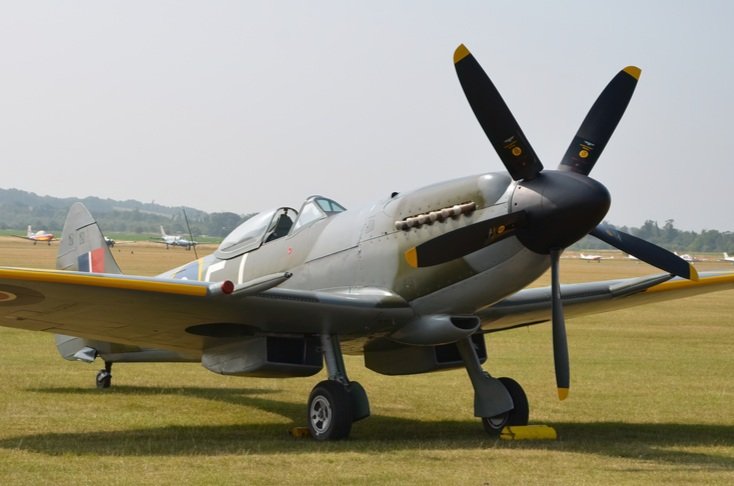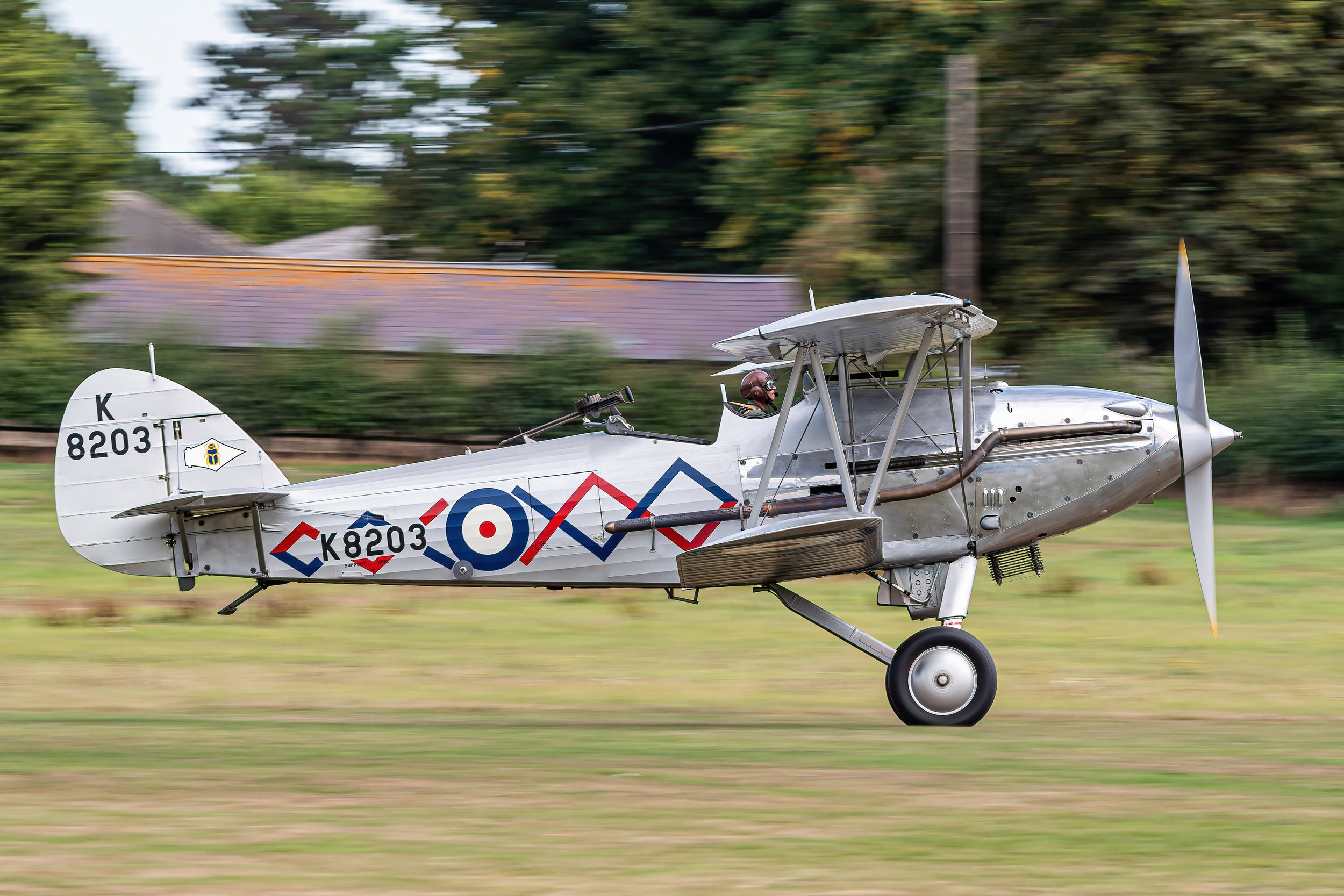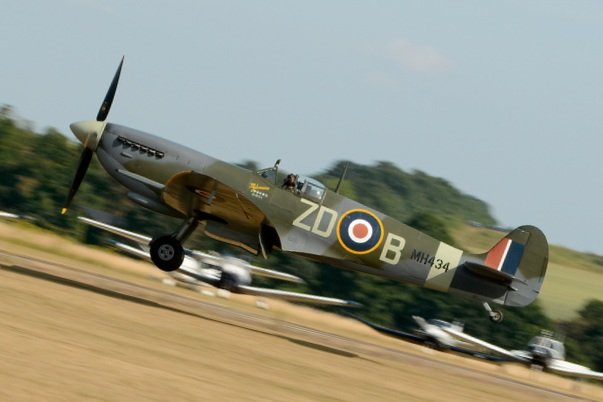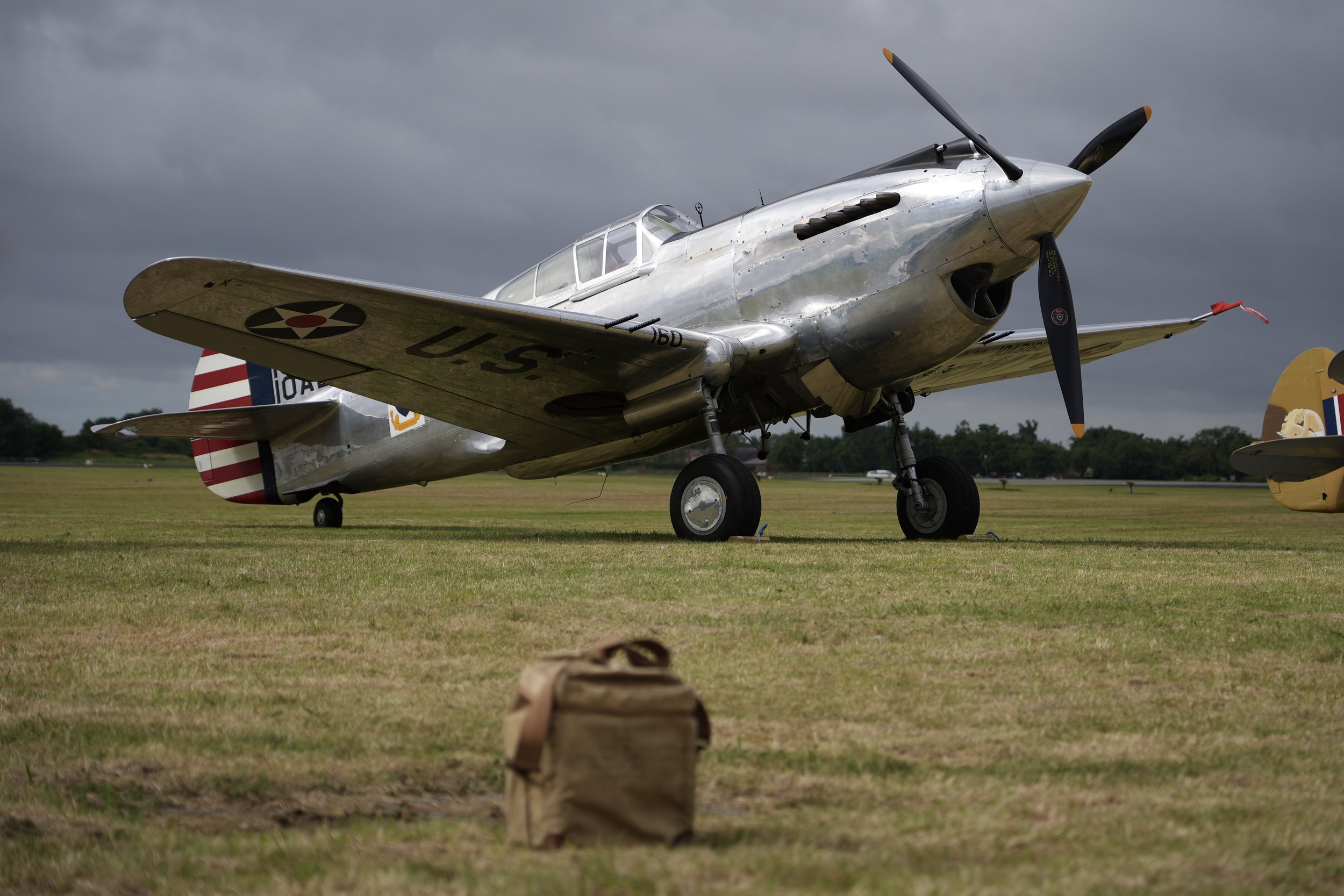Spitfire G-SPIT
Year built
1944
Aircraft
Spitfire FR.XIV
Base
Duxford Airfield
G-SPIT was built by Vickers-Armstrong, Keevil and delivered to 33 MU (Maintenance Unit) February 27 1945 and stored. On August 20 the same year she went to 213 MU for packing and shipment to India. She arrived at Karachi October 14, where she received Indian Air Force serial 48 in December 1947. She was later coded T20 and went to the Indian Air Force Technical College at Jalahalli.
What happened in the period between is unclear, but she was recovered from Bangalore by Doug Arnold in the early seventies. She found a new home at Blackbushe, in England, to join his Warbirds of Great Britain collection. Restoration begun by Dick Melton, registration G-BGHB was not taken up and she became G-SPIT on March 2, 1979.
The Fighter Collection engineers took over the restoration when the aircraft changed ownership and was able to complete the work in 1992. Her first flight after restoration took place at Duxford on August 14, 1992.
MV293 was the first example of its mark to be flying in Europe at that time and was painted in the all silver colours of the post war RAF. In 2000, the aircraft was repainted in the colours of Johnnie Johnson, wearing code JE-J, his personal initials.
Johnnie Johnson the highest scoring RAF fighter pilot to survive the war. He shot down 38 enemy aircraft in the skies over Western Europe between June 1941 and September 1944. This tally is remarkable on two counts. Johnson began his operational career after the end of the Battle of Britain, which provided such a rich harvest of combat victories for many of his peers as the Luftwaffe's air fleets attacked virtually day after day. Kills were much harder to obtain on the fighter sweeps over enemy territory which succeeded the battle, operations for which the Spitfire was much less suited than it had been to the role of air defence in the summer of 1940.
His wartime tally of 38 was exceeded only by that of the South African ace 'Pat' Pattle, who was credited with 41 kills in the Middle East and Eastern Mediterranean before being shot down and killed in April 1941.
Johnie Johnson passed away at the age of 85 on January 30, 2000.
| Back to Top |
Supermarine Spitfire LF.Mk.IX
The Supermarine Spitfire is a British single-seat fighter aircraft that was used by the Royal Air Force and other Allied countries before, during, and after World War II. Many variants of the Spitfire were built, using several wing configurations, and it was produced in greater numbers than any other British aircraft. It was also the only British fighter produced continuously throughout the war. The Spitfire continues to be popular among enthusiasts; nearly 60 remain airworthy, and many more are static exhibits in aviation museums throughout the world.
The Spitfire was designed as a short-range, high-performance interceptor aircraft by R. J. Mitchell, chief designer at Supermarine Aviation Works, which operated as a subsidiary of Vickers-Armstrong from 1928. Mitchell pushed the Spitfire's distinctive elliptical wing with cutting-edge sunken rivets (designed by Beverley Shenstone) to have the thinnest possible cross-section, helping give the aircraft a higher top speed than several contemporary fighters, including the Hawker Hurricane. Mitchell continued to refine the design until his death in 1937, whereupon his colleague Joseph Smith took over as chief designer, overseeing the Spitfire's development throughout its multitude of variants.
During the Battle of Britain, from July to October 1940, the public perceived the Spitfire to be the main RAF fighter, though the more numerous Hurricane shouldered a greater proportion of the burden against Nazi Germany's air force, the Luftwaffe. However, Spitfire units had a lower attrition rate and a higher victory-to-loss ratio than those flying Hurricanes because of Spitfire's higher performance. During the battle, Spitfires were generally tasked with engaging Luftwaffe fighters—mainly Messerschmitt Bf 109E-series aircraft, which were a close match for them.
After the Battle of Britain, the Spitfire superseded the Hurricane to become the backbone of RAF Fighter Command, and saw action in the European, Mediterranean, Pacific, and South-East Asian theatres. Much loved by its pilots, the Spitfire served in several roles, including interceptor, photo-reconnaissance, fighter-bomber, and trainer, and it continued to serve in these roles until the 1950s. The Seafire was a carrier-based adaptation of the Spitfire that served in the Fleet Air Arm from 1942 through to the mid-1950s. Although the original airframe was designed to be powered by a Rolls-Royce Merlin engine producing 1,030 hp (768 kW), it was strong enough and adaptable enough to use increasingly powerful Merlins and, in later marks, Rolls-Royce Griffon engines producing up to 2,340 hp (1,745 kW). As a result, the Spitfire's performance and capabilities improved over the course of its service life.
| Back to Top |




| Back to Top |

































